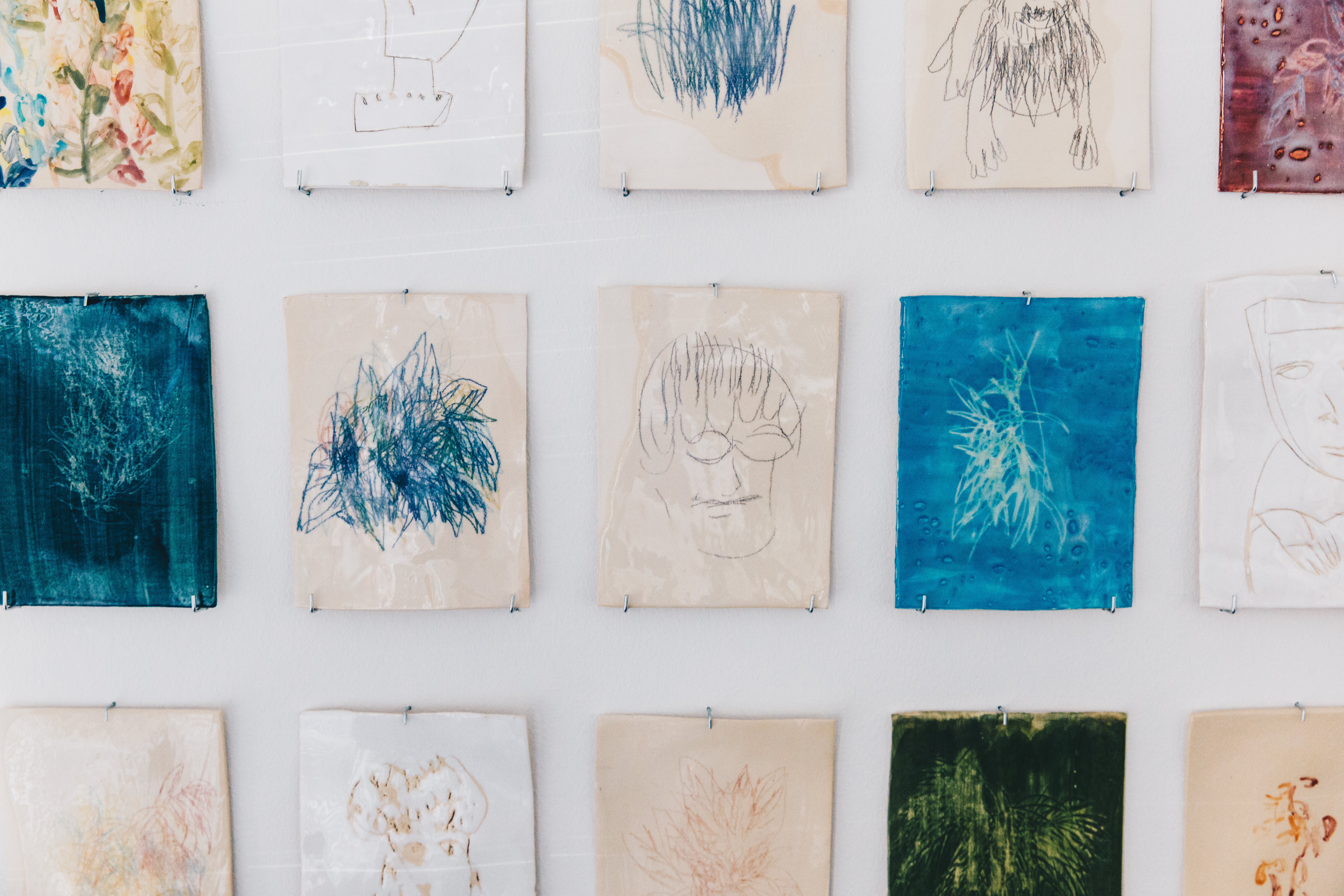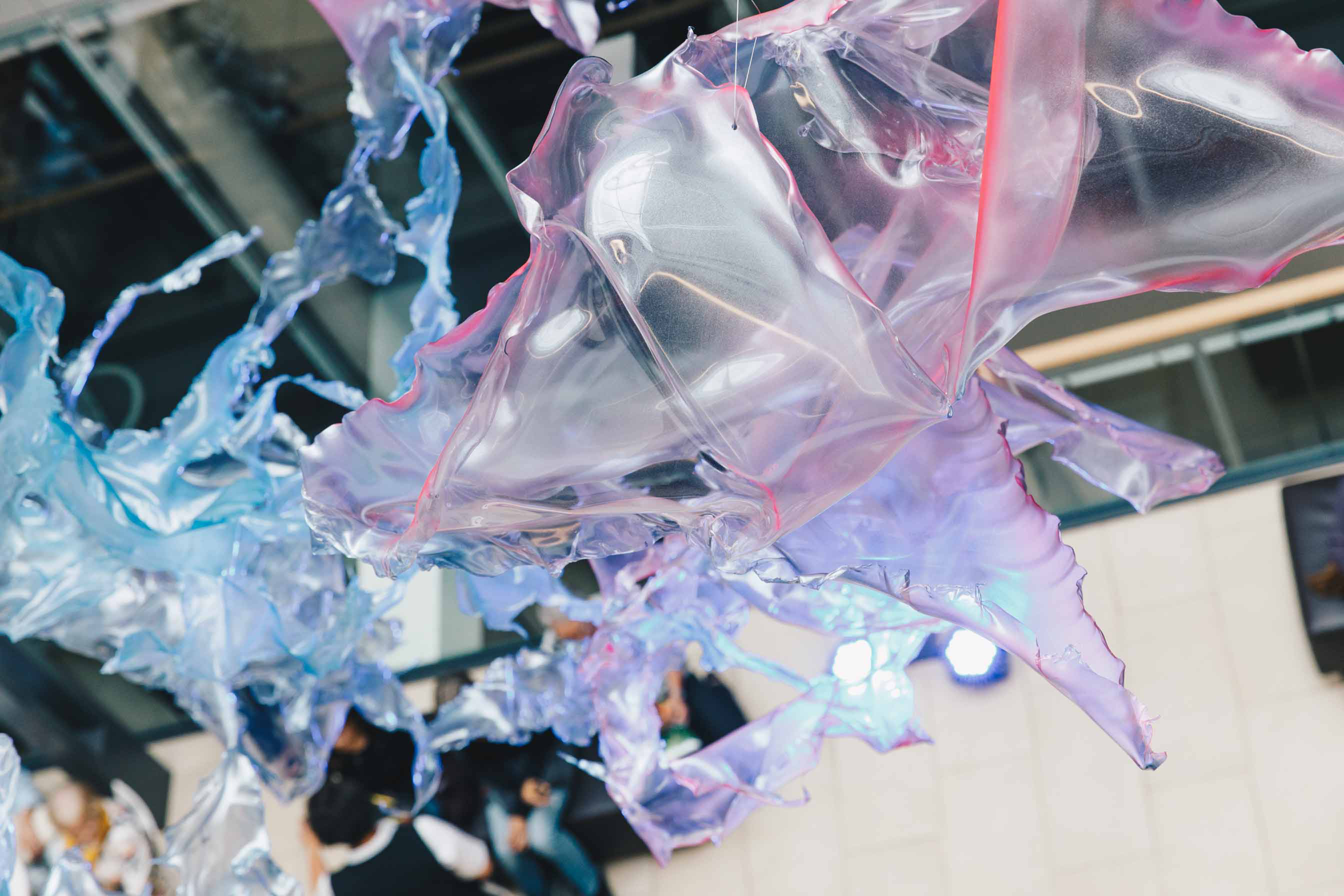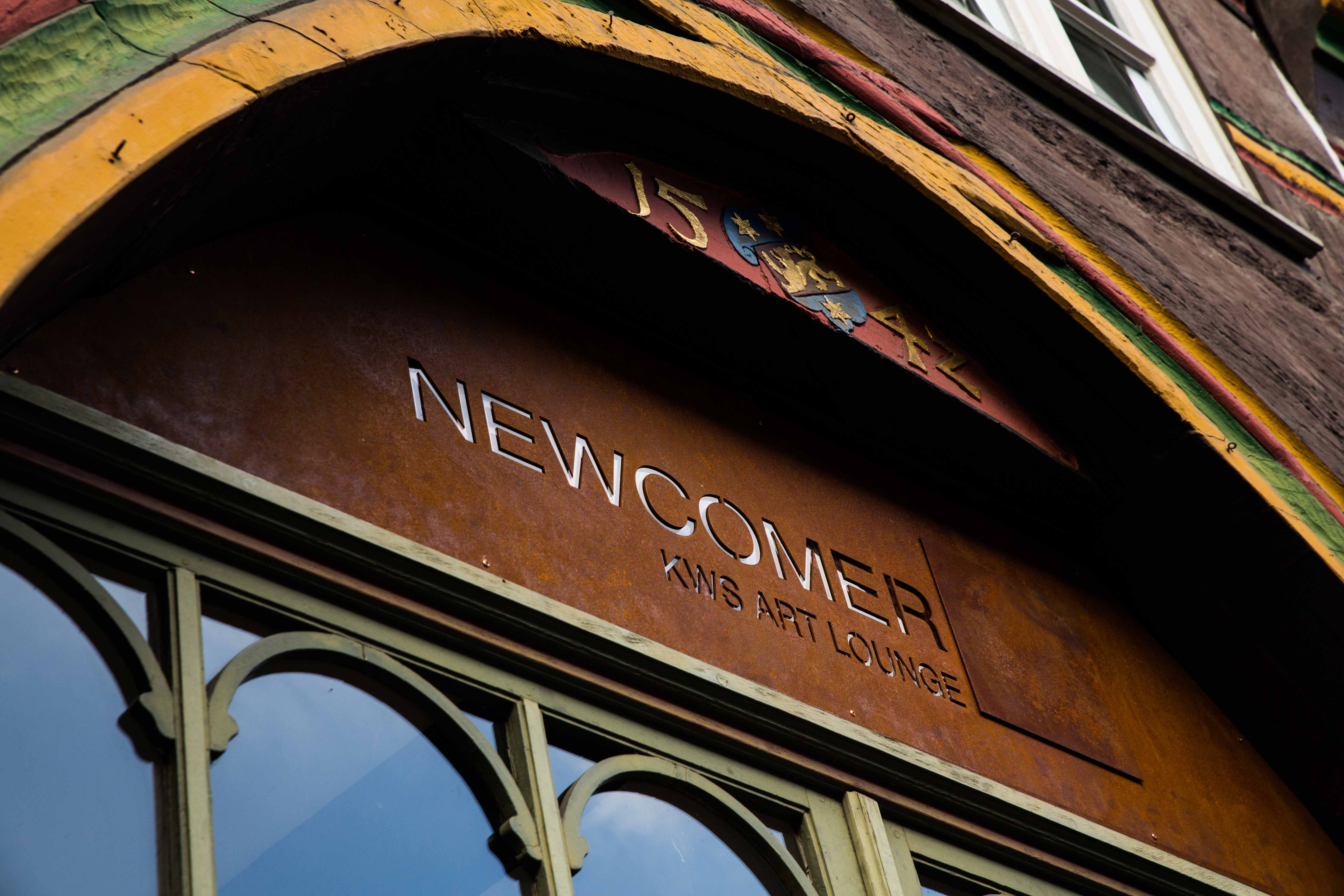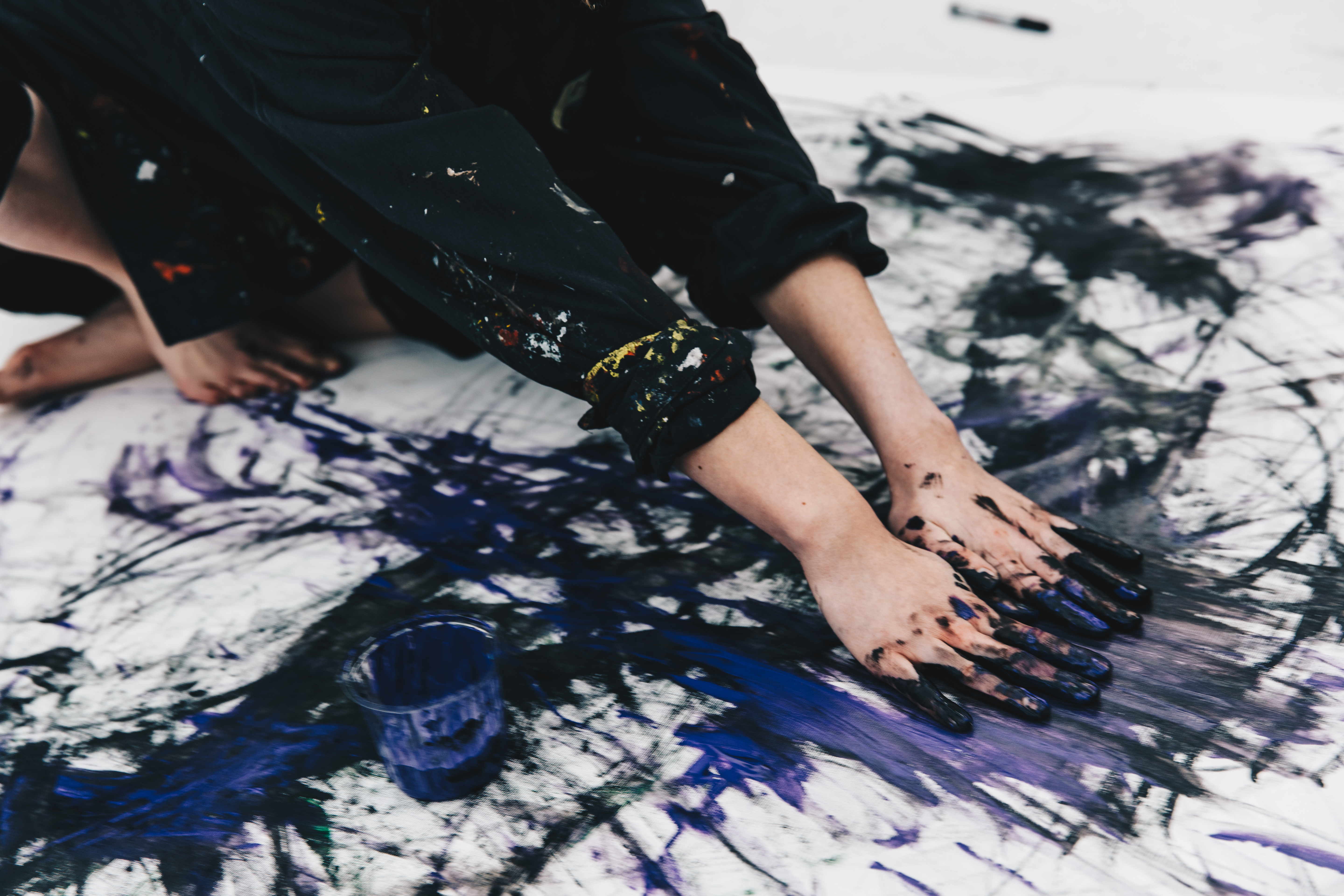Exhibition
Drawing Lines: Tuğba Şimşek
Tuğba Şimşek is always on the move.
Her view attentive and as unbiased as possible, Tuğba Şimşek roams her surroundings and scans the stream of passing (urban) landscapes, passersby, architecture and lettering. With the same seriousness she registers, picks up and processes the conspicuous and the seemingly marginal, image and text fragments. She condenses the complexity and polyphony of urban space, the simultaneity of withering shrubs, honking taxis or ornamental decorations of buildings – colours, forms, sounds and smells – in a few quickly set strokes on paper. Sometimes clearly identifiable contours can be made out in the lines, at other times they get lost in the shadowy, approximate.
The limits of pictorial representation are tested: how far can procedures of formal reduction be exhausted without endangering the symbolic reference function, the symbolic nature of the drawings? What (imagined) meanings are assigned to the integrated Spanish and Turkish words? And what sounds and moods do they (re-)produce? Tuğba Şimşek pursues a concretely site-specific, yet nomadic artistic practice that requires regular changes of environment – a working method in which a studio or fixed production facilities are no longer necessary, since she aims for a high degree of immediacy, a direct processing of what she experiences and sees.
As fragments of memory ...
“Where to stick the present, as it quickly becomes past, within the messy city of the mind?“
“My art doesn't have to be shown in a white cube. Every now and then you come across my work in the middle of the street, if you keep your eyes open."
"... and mostly everything ends on the roof. It's more of a naive way of transporting heavy and fragile works."
- Tuğba Şimşek
And what sounds and moods do they (re-)produce?
For some time now, Tuğba Şimşek has also been working on methods to give the unconscious more space in her artistic expression. Drawing is established in Tuğba Şimşeks everyday life as a continuous and almost performative, body-oriented practice, so that internalized patterns of movement can be called up intuitively. The colours used are also chosen rather casually. When she works with the black coated scratch paper – which is in contrast to conventional drawing a subtractive, material-removing procedure – she has no control over the exposed colours at all.
What comes into consciousness en passant is accepted as part of the artistic statement ...
This text was written by Nele Kaczmarek, Curator in the art associationBraunschweig.
About the artist - Tuğba Şimşek
She travels a lot. Most recently she has visited Bogotá, Colombia and Istanbul, Adiyaman, Diyarbakir and Uşak in Turkey. She also spent a few days in Frankfurt and Braunschweig.
During this time a series of new drawings and prints have been created, which form the core of the exhibition Drawing Lines. Even before entering the exhibition, visitors see an updated version of the work Raven Feather, Turkish Poppy and Guinea Fowl, framed 2015/20, in which the motif of the artist as a traveller is introduced.
Biography
- 2019 - Master student,Olav Christopher Jenssen
- 2018- Sofia Hultén, Julia SteinerHochschule für Bildende Künste,Braunschweig
- 2016- Diploma with distinction,Hochschule für Bildende KünsteBraunschweig
- 2015- Art Center College of Design,Los AngelesUSA
- 2013- Metropolitan Universityof Art and Design, CardiffWales
- 2010- Hochschule für Bildende Künste,Braunschweig,Monika Grzymala, Nadine Fecht,Björn Dahlem, Raimund Kummer
- 2008 - Studies,Mannheim,Barbara Hindahl, Michael Witlatschil
Discover more
Your contact



















































